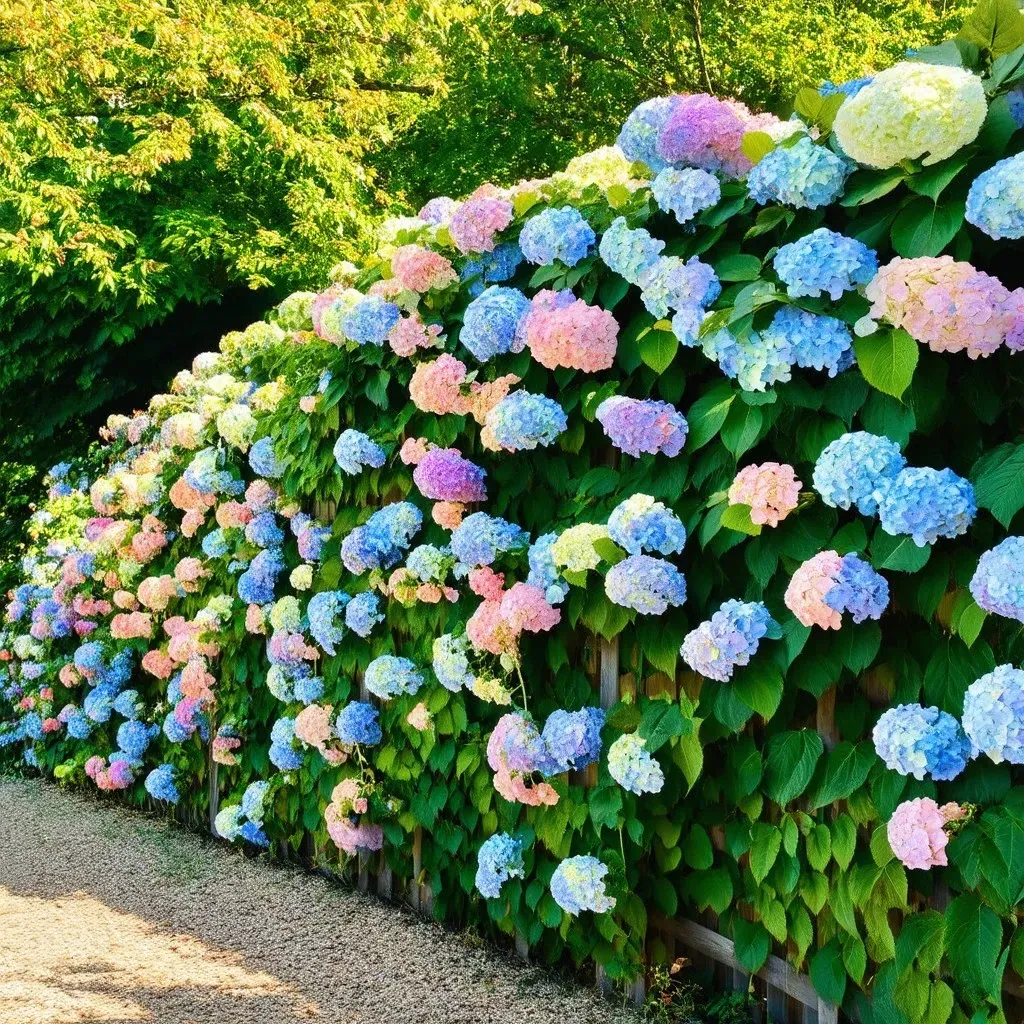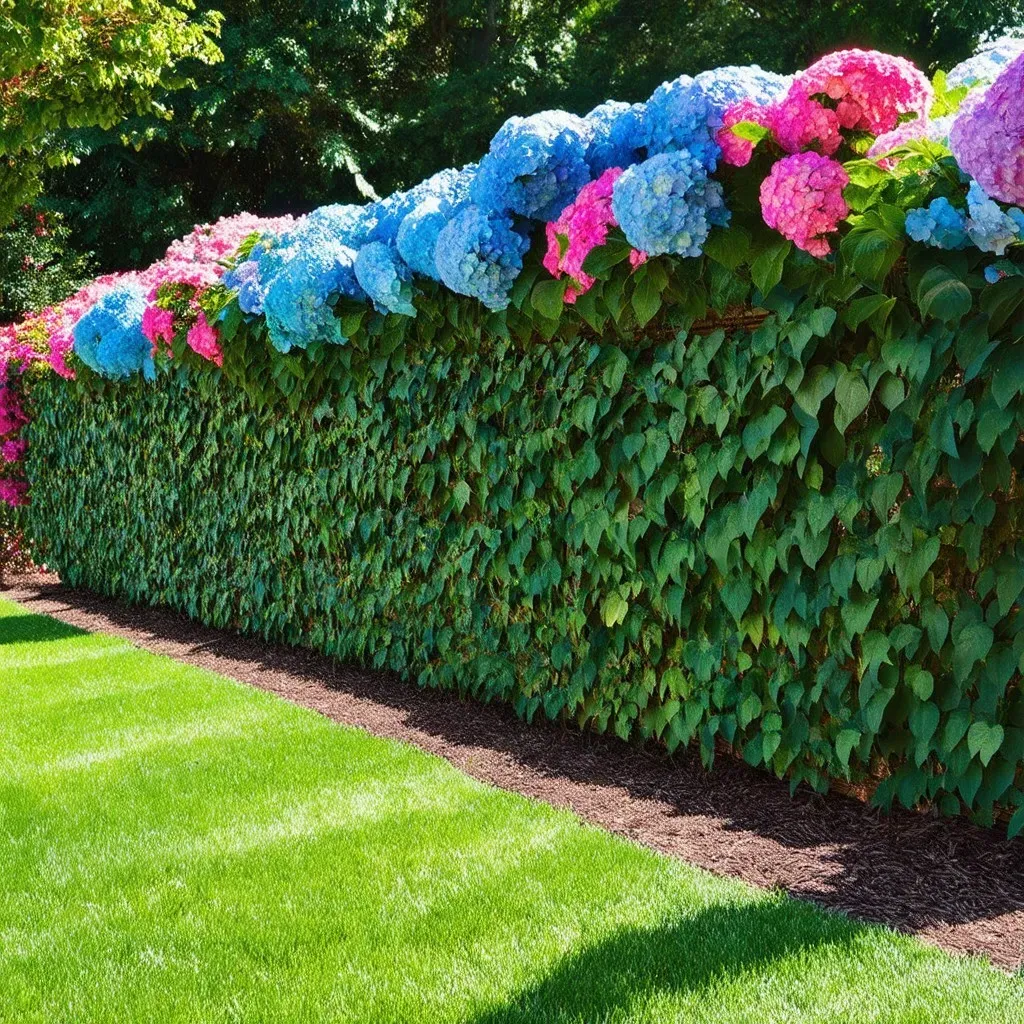A hydrangea fence is a stunning way to create privacy, beauty, and a sense of tranquility in your outdoor space. By planting a row of hydrangeas, you can not only shield your garden from outside prying eyes, but also add vibrant colors and stunning blooms that change with the seasons. This article will explore the many ways to effectively use hydrangeas as a privacy hedge and provide practical tips for maintaining them along your fence line.
Choosing the Right Hydrangea Varieties for Fencing
When considering a hydrangea hedge, it’s crucial to select the right variety that suits your garden’s conditions and your aesthetic preferences. Below are some of the best Hydrangea Types suitable for creating a beautiful and functional fence:
| Hydrangea Type | Height | Bloom Color | Sun Preference |
|---|---|---|---|
| Bigleaf Hydrangea | 3-6 ft | Blue, Pink, White | Partial shade to full sun |
| Oakleaf Hydrangea | 3-6 ft | White, Pink | Partial shade |
| peegee hydrangea | 6-10 ft | White | Full sun |
| Climbing Hydrangea | 30-50 ft | White | Partial shade |
| Smooth Hydrangea | 3-5 ft | White, Pink | Full sun to partial shade |
Hydrangea Growth Facts
- Growth Rate: Hydrangeas can grow rapidly, generally reaching their full height within three to five years after planting.
- Blooming Season: Most hydrangeas bloom in summer, providing vibrant color that lasts until fall.
- Water Needs: These shrubs require consistent watering, especially in dry spells. An inch of water per week is ideal.
Designing Your Hydrangea Fence Line
When installing a hydrangea privacy hedge, consider the width of the flower beds you want and your desired hedge height. Follow these design tips for maximizing visual appeal:
- Spacing: Hydrangeas should be spaced about 2-3 feet apart to allow adequate air circulation while still creating a dense hedge.
- Layering: Plant taller hydrangeas at the back and shorter ones in the front to create depth and dimension.
- Color Coordination: Select hydrangeas that offer a range of bloom colors for an eye-catching effect. For instance, you may choose blue Bigleaf hydrangeas mixed with white PeeGee varieties.
- Seasonal Interest: Incorporate evergreen plants along with hydrangeas for year-round privacy.

Hydroponic Hydrangeas: The Modern Approach
Hydroponics is an innovative way to grow hydrangeas without soil. This method can yield lush, robust plants that occupy less space while still creating a stunning fence:
- Nutrient Solutions: A balanced nutrient solution mixed with water will support hydrangea growth effectively.
- Space Capacity: Hydroponic systems can be stacked vertically, making it easier to manage small spaces.
- Water Control: Hydroponics allows better control over water supply, reducing the risk of disease caused by overwatering.
Planting and Maintenance of Your Hydrangea Hedge
Soil Preparation
To ensure successful growth, prepare the soil adequately:
- Soil Type: Hydrangeas thrive in well-drained, loamy soil. Add organic matter or compost to improve soil structure.
- pH Level: Aim for a pH of 5.5 to 6.5 for optimal blooming. You can adjust this with lime or sulfur, depending on the current soil condition.
Watering and Fertilizing
Maintaining your hydrangea hedge requires regular care as follows:
- Watering: Hydrangeas require consistent moisture. Water deeply about once a week, particularly during dry spells.
- Fertilizing: Apply a balanced fertilizer in early spring to boost growth. Avoid high-nitrogen foods, as these can promote leaf growth at the expense of blooms.

Pruning Techniques
Proper pruning is essential for promoting healthy growth and abundant blooms. Follow these tips:
- When to Prune: For most hydrangea varieties, prune in late winter or early spring before new growth appears.
- Pruning Technique: Cut spent blooms to the first set of strong buds and thin out any thick stems to improve air circulation.
FAQs
What are the best hydrangeas for creating a privacy hedge?
The best varieties for hedging include Bigleaf, Oakleaf, PeeGee, and Climbing Hydrangeas, as they offer size, density, and beautiful blooms.
How far apart should I plant my hydrangeas in a fence line?
Plant hydrangeas 2 to 3 feet apart to ensure they fill in adequately while still allowing for individual growth.
Do hydrangeas require direct sunlight?
Most hydrangeas prefer partial shade but can thrive in full sun, especially if adequately watered.
How often should I water my hydrangea fence?
Hydrangeas typically need about an inch of water per week, so watering should be done regularly, particularly during dry seasons.
Can hydrangeas grow in poor soil?
While they can adapt to various soil types, hydrangeas thrive in rich, loamy soil. It’s beneficial to amend poor soil with organic matter to improve their growth potential.
For more detailed information on gardening with hydrangeas, refer to Great Garden Plants.
Incorporating hydrangeas along your fence is a delightful choice for anyone looking to enhance both privacy and aesthetic appeal in their garden. By selecting the right variety, applying proper planting techniques, and ensuring appropriate care, you can create a stunning hydrangea fence that will bring joy and beauty for years to come.


